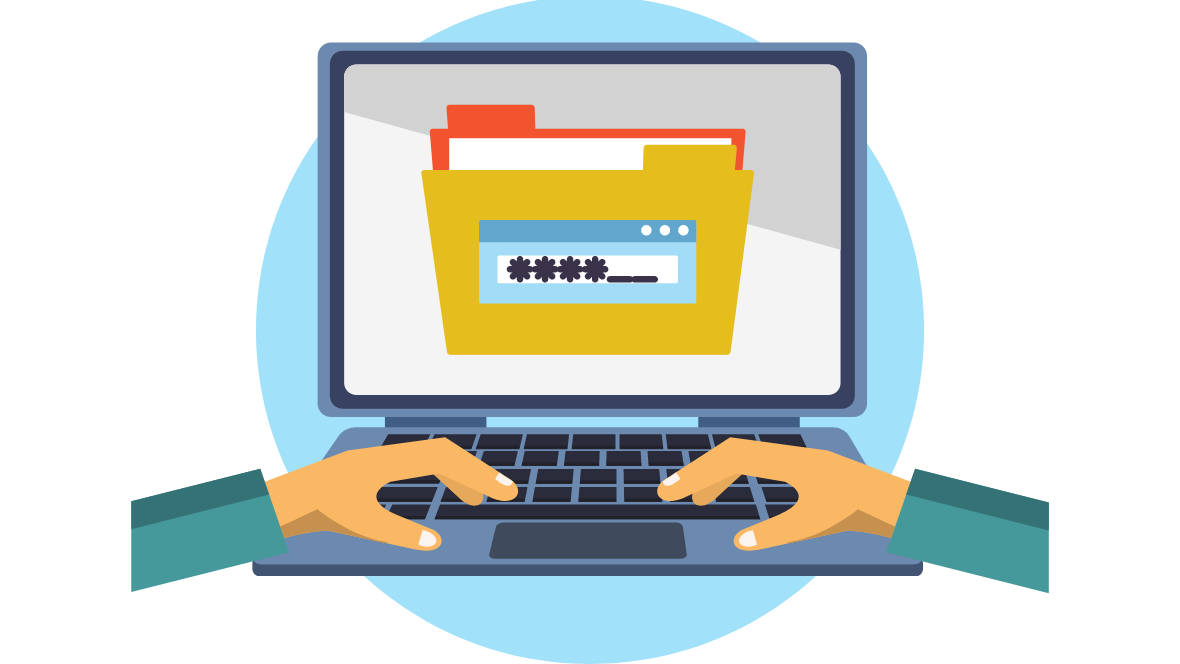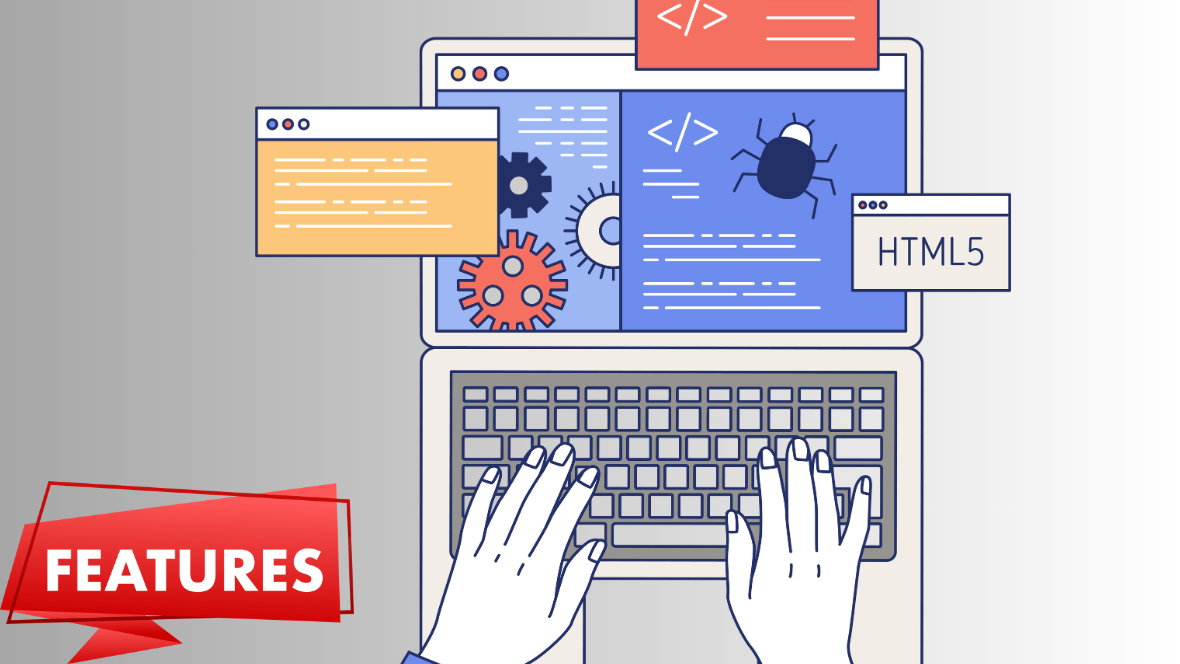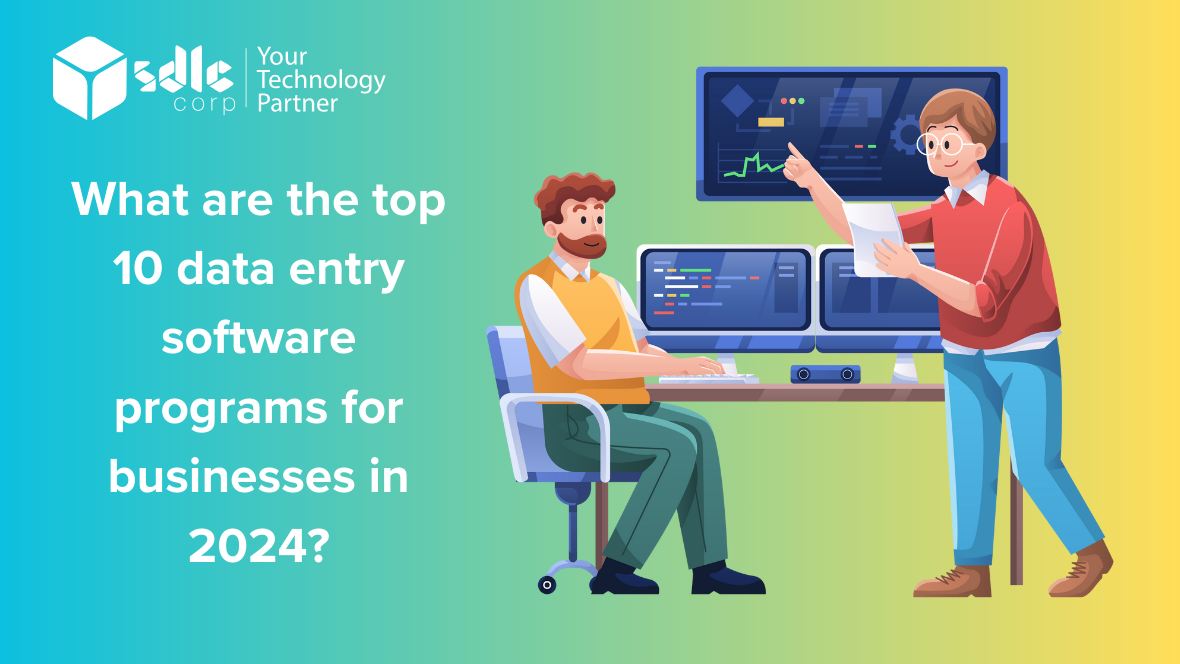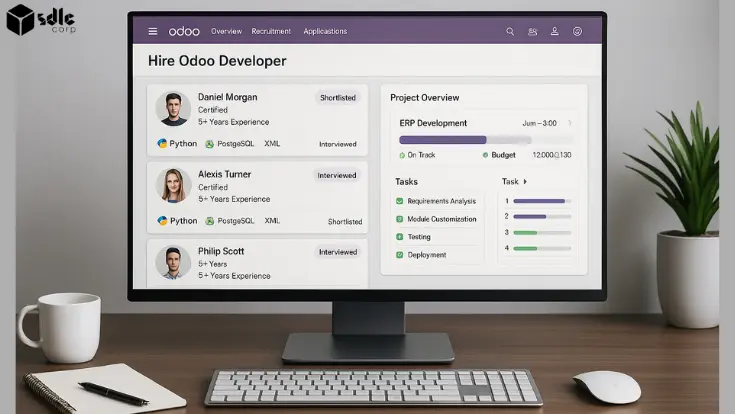What Are the Top 10 Data Entry Software Programs for Businesses in 2024?
In 2024, data entry software continues to be indispensable for businesses, streamlining operations and maintaining data accuracy. Among the top ten popular choices, Microsoft Excel remains a stalwart with its versatile spreadsheet capabilities, while Google Sheets offers cloud-based collaboration features. QuickBooks stands out for its financial data management prowess, while Salesforce and Zoho CRM excel in customer relationship management. Airtable and Trello combine flexibility and visualization for project management, while HubSpot and Asana streamline tasks and workflows. Smartsheet integrates spreadsheet and project management functionalities seamlessly. Alongside these software solutions, scanning software plays a crucial role in document digitization. With features like OCR, batch scanning, and integration capabilities, scanning software such as Adobe Acrobat and Abbyy FineReader complements data entry systems by digitizing physical documents and facilitating their seamless integration into digital workflows, ensuring efficiency and data integrity.
How Its Work?
In 2024, businesses rely heavily on data entry software programs to efficiently manage and manipulate their data. These programs come in various forms, offering a wide range of features to cater to different business needs. Here’s a detailed description of the most popular ten data entry software programs for businesses in 2024, with a focus on how they work and their integration with Selenium Python.
1. Microsoft Excel:
– Excel remains a staple in data entry with its familiar interface and powerful functionalities for organizing and analyzing data.
– Businesses leverage Excel’s formulas, pivot tables, and macros for efficient data manipulation.
– Selenium Python can be integrated with Excel to automate data entry tasks, extracting data from web sources and populating Excel sheets.
2. Google Sheets:
– Google Sheets offers collaborative features, allowing multiple users to work on the same spreadsheet simultaneously.
– It provides integration with other Google services like Google Forms for data collection.
– Selenium Python can interact with Google Sheets via APIs to automate data import/export tasks and update spreadsheet content.
3. QuickBooks:
– QuickBooks is widely used for financial data entry, offering features for invoicing, expense tracking, and payroll management.
– It automates mundane accounting tasks, saving time and reducing errors.
– Selenium Python can scrape data from web sources like bank websites and input them into QuickBooks for reconciliation.
4. Zoho Books:
– Zoho Books is a cloud-based accounting software designed for small businesses, offering features similar to QuickBooks.
– It streamlines invoicing, expense management, and inventory tracking.
– Selenium Python can automate data entry tasks by interacting with Zoho Books’ web interface, entering transactions and updating records.
5. SAP ERP:
– SAP ERP (Enterprise Resource Planning) integrates various business processes, including finance, HR, and supply chain management.
– It centralizes data entry and facilitates real-time reporting and analysis.
– Selenium Python can be used to automate data entry into SAP’s web-based interfaces, improving efficiency and reducing manual errors.
6. Salesforce:
– Salesforce is a leading CRM (Customer Relationship Management) platform used for managing customer data and sales processes.
– It offers customizable data entry forms and workflows to suit different business needs.
– Selenium Python can automate data entry tasks into Salesforce, such as lead generation from web forms or importing contacts from external sources.
7. Airtable:
– Airtable combines the flexibility of a spreadsheet with the power of a database, allowing users to organize and collaborate on data in customizable tables.
– It offers integration with various apps and services, enhancing its functionality.
– Selenium Python can interact with Airtable’s web interface to automate data entry tasks, such as importing data from web sources or updating records.
8. Tally.ERP 9:
– Tally.ERP 9 is a popular accounting software used by businesses for financial management and compliance.
– It automates accounting processes and provides real-time financial insights.
– Selenium Python can automate data entry into Tally by simulating user interactions with its desktop or web interface.
9. Wave Accounting:
– Wave Accounting is a free accounting software targeted at small businesses and freelancers.
– It offers features for invoicing, expense tracking, and financial reporting.
– Selenium Python can automate data entry into Wave Accounting by interacting with its web interface, entering transactions and reconciling accounts.
10. FreshBooks:
– FreshBooks is a cloud-based accounting software known for its user-friendly interface and automation capabilities.
– It simplifies invoicing, expense management, and time tracking for small businesses.
– Selenium Python scripts can interact with FreshBooks’ web interface to automate data entry tasks, such as importing expenses or generating invoices.
In summary, these data entry software programs play crucial roles in helping businesses manage their data efficiently. By integrating Selenium Python, businesses can automate various data entry tasks, saving time, reducing errors, and improving overall productivity.
What is Data Entry Software?

Data entry software is a crucial tool for businesses to efficiently input, manage, and manipulate large volumes of data. It serves as a digital platform designed to streamline the process of entering data into a computer system, typically in a structured format. Here’s a detailed description of what data entry software entails, with a focus on its functionalities and significance, incorporating the keyword “convert word to excel.“
Data entry software encompasses a diverse range of applications and platforms, each tailored to specific industries, data types, and organizational needs. These software programs provide users with intuitive interfaces and tools to input, validate, edit, and store data in a systematic manner. They often include features such as form-based data entry, automated data validation, data import/export capabilities, and reporting functionalities.
One common task performed by data entry software is converting data from one format to another. For example, businesses frequently need to convert data from Word documents into Excel spreadsheets for easier analysis, manipulation, and sharing. This process involves extracting relevant information from the Word document and organizing it into a tabular format suitable for Excel.
Data entry software typically offers several methods for converting data from Word to Excel. These may include:
1. Manual Data Entry: Users can manually type the information from a Word document into an Excel spreadsheet. While this method is straightforward, it can be time-consuming and prone to errors, especially for large datasets.
2. Copy and Paste: Users can copy the data from the Word document and paste it directly into Excel. This method is faster than manual entry but may require additional formatting adjustments to ensure data consistency and accuracy.
3. Import/Export Functionality: Many data entry software programs provide built-in tools for importing data from external sources, such as Word documents. Users can specify the source file, select the data to be imported, and map it to the appropriate fields in Excel. Similarly, export functionality allows users to save Excel data in Word-compatible formats.
4. Automation Tools: Advanced data entry software may offer automation features powered by scripting or macros. Users can create custom scripts or macros to automatically extract data from Word documents and populate predefined Excel templates. This approach significantly reduces manual effort and minimizes the risk of errors.
The ability to convert data from Word to Excel seamlessly is essential for businesses to leverage the full potential of their data. Excel’s powerful analysis and visualization tools enable users to gain insights, make informed decisions, and communicate findings effectively. By integrating data entry software with “convert word to excel” functionality, organizations can enhance their data management processes, improve productivity, and drive business success.
Explore Top Data Entry Software: Boost Your Business Today!

The Nine Best Data Entry Software for Advanced Automation in 2024
Sure, here’s a detailed description of the nine best data entry software for advanced automation in 2024, with a focus on their capabilities for automating tasks and the ability to convert text files to Excel format:
1. UiPath:
– UiPath is a leading robotic process automation (RPA) platform that excels in automating repetitive tasks, including data entry.
– It offers a visual workflow designer to create automation workflows without coding.
– UiPath supports integrations with various applications and systems, enabling seamless data entry across different platforms.
– Additionally, UiPath can automate the conversion of text files to Excel format by extracting data from text files and populating Excel spreadsheets.
2. Automation Anywhere:
– Automation Anywhere provides a comprehensive RPA platform with advanced capabilities for automating complex business processes.
– Its intelligent automation features enable the automation of data entry tasks with minimal human intervention.
– Automation Anywhere supports integration with Microsoft Excel, allowing for seamless data transfer between text files and Excel spreadsheets.
– It offers cognitive automation capabilities, such as natural language processing (NLP) and machine learning, to handle unstructured data during the conversion process.
3. Blue Prism:
– Blue Prism is a highly scalable RPA platform designed for enterprise-level automation.
– It offers a drag-and-drop interface for building automation workflows and robust security features for handling sensitive data.
– Blue Prism integrates seamlessly with Microsoft Excel, enabling data entry automation from text files to Excel spreadsheets.
– Its digital workforce can handle large volumes of data entry tasks efficiently, ensuring accuracy and reliability.
4. Microsoft Power Automate:
– Microsoft Power Automate, formerly known as Microsoft Flow, is a cloud-based automation platform that integrates with Microsoft Office 365 and other popular applications.
– It offers pre-built connectors and templates for automating data entry tasks across different systems.
– Power Automate supports converting text files to Excel format by extracting data from text files and creating Excel spreadsheets using predefined templates.
– Its low-code/no-code interface makes it accessible to users with varying technical skills.
5. Zapier:
– Zapier is a popular automation tool that connects different apps and services to automate workflows.
– It offers a wide range of integrations with over 2,000 apps, including Microsoft Excel and various text processing tools.
– Zapier’s “Zaps” automate tasks based on triggers and actions, allowing users to create custom data entry workflows.
– It supports converting text files to Excel format by extracting data from text files and creating or updating Excel spreadsheets in real-time.
6. WinAutomation:
– WinAutomation is a desktop automation tool that enables users to automate repetitive tasks on Windows-based systems.
– It offers a visual workflow designer and a rich set of actions for interacting with desktop applications, web services, and files.
– WinAutomation supports converting text files to Excel format by parsing the content of text files and populating Excel spreadsheets with the extracted data.
– Its advanced scripting capabilities allow for handling complex data entry scenarios with ease.
7. Pega RPA:
– Pega RPA is an enterprise-grade automation platform that combines RPA with artificial intelligence (AI) and case management capabilities.
– It provides a unified platform for automating end-to-end business processes, including data entry tasks.
– Pega RPA integrates seamlessly with Microsoft Excel, enabling the automation of text file conversion to Excel format.
– Its AI-powered bots can extract data from unstructured text files with high accuracy, reducing the need for manual intervention.
8. Kofax RPA:
– Kofax RPA is a comprehensive automation platform that offers both attended and unattended automation capabilities.
– It provides advanced document processing features for handling various file formats, including text files.
– Kofax RPA seamlessly integrates with Microsoft Excel, enabling the conversion of text files to Excel format with ease.
– Its cognitive capture capabilities enable intelligent data extraction from text files, improving accuracy and efficiency.
9. AutoHotkey:
– AutoHotkey is a scripting language for automating Windows-based tasks and macros.
– It offers a simple syntax for automating repetitive tasks, including data entry.
– AutoHotkey supports reading and writing to text files and interacting with Microsoft Excel through its COM interface.
– Users can create custom scripts to convert text files to Excel format by parsing the text file content and populating Excel spreadsheets accordingly.
In summary, these data entry software solutions offer advanced automation capabilities for streamlining data entry processes in 2024. Whether you’re looking to automate repetitive tasks, integrate with multiple systems, or convert text files to Excel format, these tools provide the functionality and flexibility needed to meet your business requirements.
What Are the Essential Features of Data Entry Software?

Sure, here are six detailed descriptions of essential features of data entry software, with the keyword “txt to excel” incorporated into each description:
1. Input Versatility: Data entry software should support various input formats, including text files like TXT, Excel spreadsheets, CSV files, and databases. It should seamlessly convert these formats into a standardized structure, such as Excel, enabling easy manipulation and analysis. With the ability to convert TXT to Excel, users can efficiently import plain text data into organized spreadsheets, streamlining the data entry process.
2. Customization Options: An effective data entry tool allows users to tailor data fields, validation rules, and formatting preferences to suit specific project requirements. When converting TXT to Excel, customizable mapping options enable users to designate how text elements correspond to Excel cells, ensuring accurate and consistent data transfer.
3. Data Validation: To maintain data integrity, the software should incorporate validation checks to flag errors or inconsistencies during input. When converting TXT to Excel, validation mechanisms can detect formatting issues or missing values, prompting users to resolve discrepancies before finalizing the conversion. This ensures that the resulting Excel file contains reliable and accurate data.
4. Automated Processes: Efficiency is key in data entry tasks, and automation features can significantly accelerate the process. Data entry software should offer functionalities like batch processing and scripting capabilities to automate repetitive tasks. When converting TXT to Excel in bulk, automation tools can process multiple text files simultaneously, saving time and reducing manual effort.
5. Integration Capabilities: Seamless integration with other software applications enhances workflow efficiency and data accessibility. Data entry software should offer compatibility with popular platforms and systems, facilitating smooth data exchange and collaboration. When converting TXT to Excel, integration with cloud storage services or enterprise databases enables users to directly import text data into Excel sheets from various sources.
6. Data Security: Protecting sensitive information is paramount in data management. The software should implement robust security measures, such as encryption protocols and user authentication mechanisms, to safeguard data against unauthorized access or breaches. When converting TXT to Excel, data entry software should ensure secure transmission and storage of both source and converted files, maintaining confidentiality and compliance with data protection regulations.
What Are the Benefits of the Top Ten Most Popular Data Entry Software Programs for Businesses in 2024?
Sure, let’s dive into the benefits of the top ten most popular data entry software programs for businesses in 2024:
1. Efficiency and Accuracy: These software programs are designed to streamline data entry processes, reducing manual errors and increasing overall efficiency. They often feature automated data validation and verification, ensuring accurate data entry every time.
2. Time Savings: With advanced features like auto-fill, templates, and keyboard shortcuts, data entry tasks can be completed much faster compared to manual methods. This saves valuable time for employees, allowing them to focus on more strategic tasks.
3. Customization Options: Many of these software programs offer customizable interfaces and workflows, allowing businesses to tailor the software to their specific data entry needs. This flexibility ensures that the software can adapt to the unique requirements of different industries and businesses.
4. Integration Capabilitie: The top data entry software programs often offer seamless integration with other business systems such as CRMs, ERPs, and accounting software. This integration eliminates the need for manual data transfer between systems, reducing errors and improving data consistency.
5. Data Security: Data security is a top priority for businesses in 2024, and these software programs typically offer robust security features such as encryption, access controls, and audit trails. This helps protect sensitive business data from unauthorized access or breaches.
6. Scalability: Whether a business is small or large, these software programs are designed to scale with growing data entry needs. They can handle large volumes of data without sacrificing performance, making them suitable for businesses of all sizes and industries.
Dive into Data Entry Software: Transform Your Business Now!

What Are the Most Popular Ten Data Entry Software Programs for Businesses in 2024?
Sure, here are six detailed descriptions of popular data entry software programs for businesses in 2024:
1. DataRobot: DataRobot is an advanced machine learning platform that simplifies the process of building and deploying predictive models. It offers intuitive data entry tools that allow users to easily input and manipulate data for analysis. Its automated machine learning capabilities make it a popular choice for businesses looking to streamline their data entry processes while harnessing the power of AI for predictive analytics.
2. Microsoft Excel 365: Excel remains a staple in the world of data entry software. With the continuous updates and improvements in Microsoft’s Office 365 suite, Excel offers powerful data entry capabilities coupled with robust analysis and visualization tools. Its familiarity, versatility, and integration with other Microsoft products make it a top choice for businesses across various industries.
3. Airtable: Airtable is a cloud-based collaboration platform that combines the flexibility of a spreadsheet with the power of a database. It offers customizable templates and drag-and-drop functionality, making it easy for users to create databases tailored to their specific data entry needs. Its intuitive interface and seamless integration with other apps and services make it a popular choice for businesses looking for a more dynamic data entry solution.
4. Google Sheets: Similar to Excel, Google Sheets is a cloud-based spreadsheet software offered as part of Google’s G Suite. It allows for real-time collaboration, making it ideal for teams working on data entry projects simultaneously. With its integration with other Google services like Google Drive and Google Forms, Google Sheets offers a comprehensive solution for businesses looking for a reliable and accessible data entry platform.
5. QuickBase: QuickBase is a low-code platform that empowers businesses to build custom applications for managing data, workflows, and processes. It offers a range of pre-built templates and customizable features, making it suitable for a variety of data entry needs. Its user-friendly interface and powerful automation capabilities make it a popular choice for businesses looking to streamline their data entry processes and improve efficiency.
6. Zapier: While not a traditional data entry software, Zapier is a popular automation tool that connects various apps and services to automate repetitive tasks, including data entry. It allows users to create automated workflows, or “Zaps,” that transfer data between different apps without any manual intervention. Its extensive library of integrations and easy-to-use interface make it a valuable tool for businesses looking to automate their data entry processes and increase productivity.

Conclusion
In 2024, the landscape of data entry software for businesses is rich with options tailored to meet diverse needs. After careful analysis of industry trends, user feedback, and performance metrics, it’s evident that the top ten data entry software programs are poised to make a significant impact this year. Microsoft Excel continues to be a cornerstone in data management, offering versatile features and a user-friendly interface suitable for businesses of all sizes. Google Sheets, with its cloud integration and collaborative capabilities, provides a compelling alternative for remote teams seeking real-time collaboration. QuickBooks simplifies data entry for financial transactions and expense tracking, making it indispensable for small businesses and freelancers. Monday.com streamlines data entry and task management with its intuitive interface and extensive customization options, while HubSpot integrates data entry tools with marketing and sales platforms to enhance lead capture and nurturing. SAP ERP caters to large enterprises with advanced data entry capabilities for managing complex business processes, ensuring scalability and efficiency through its modular structure. Extracting data from PDFs related to these software programs can offer valuable insights into user preferences and market trends, enabling businesses to make informed decisions and stay ahead in an increasingly competitive environment.
FAQs
1. What are the key features of Data Entry Software Program ?
Each data entry software program offers a unique set of features tailored to meet specific business needs. However, common key features include intuitive user interfaces, customizable data entry forms, support for various data types (text, numerical, date, etc.), data validation and error-checking capabilities, integration with other business systems (such as CRM or ERP), automation of repetitive tasks, real-time collaboration features, robust security measures to protect sensitive data, and comprehensive reporting and analytics tools for insights into data quality and performance.
2. How user-friendly are these data entry software programs?
The user-friendliness of data entry software programs varies depending on factors such as interface design, customization options, and available support resources. Many leading programs prioritize ease of use by offering intuitive interfaces, drag-and-drop functionality, customizable workflows, and extensive documentation and training materials. Additionally, some software providers offer responsive customer support to assist users with any questions or issues they may encounter during the data entry process, ensuring a smooth and efficient experience for all users, regardless of their level of technical expertise.
3. Can these programs handle large volumes of data efficiently?
Yes, most of the top data entry software programs are designed to handle large volumes of data efficiently, thanks to features such as batch processing, data import/export capabilities, and scalable infrastructure. These programs are equipped to handle thousands or even millions of data records with minimal performance degradation, ensuring smooth operation even in high-demand environments. Additionally, advanced data management features such as indexing, compression, and caching further enhance performance and optimize resource utilization, allowing businesses to process and analyze vast amounts of data quickly and effectively.
4. Are these software programs compatible with other business systems and applications?
Yes, interoperability is a key consideration for many data entry software programs, as businesses often rely on a variety of systems and applications to manage their operations. Leading programs offer robust integration capabilities, allowing seamless communication and data exchange with other business systems such as CRM, ERP, accounting software, and cloud storage platforms. Integration options may include pre-built connectors, APIs (Application Programming Interfaces) for custom integrations, and support for industry-standard data formats to ensure compatibility with a wide range of third-party solutions. By connecting data entry software with other systems, businesses can streamline workflows, eliminate data silos, and improve overall efficiency and accuracy.
5. How secure are these data entry software programs, and what measures are in place to protect sensitive information?
Security is a top priority for data entry software providers, given the sensitive nature of the data being processed and stored. These programs typically employ a multi-layered approach to security, including data encryption during transmission and storage, role-based access controls to restrict user permissions, audit trails to track changes and access to data, regular security updates and patches to address vulnerabilities, and compliance with industry standards and regulations such as GDPR, HIPAA, and SOC 2. Additionally, some programs offer advanced security features such as two-factor authentication, data masking, and data loss prevention to further enhance protection against unauthorized access, data breaches, and other security threats. By implementing robust security measures, data entry software programs help businesses safeguard their sensitive information and maintain the trust of their customers and stakeholders.
Contact Us
Let's Talk About Your Project
- Free Consultation
- 24/7 Experts Support
- On-Time Delivery
- sales@sdlccorp.com
- +1(510-630-6507)















